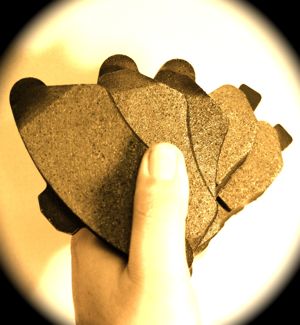 Last month, Washington was one of the first states to phase out the use of copper and other toxins in car and truck brake pads. Starting 2014, brake pads containing more than trace amounts of cadmium, chromium, asbestos, lead and mercury will not be permissible for sale in the state of Washington. Initially, it will limit the use of copper in brakes to a maximum of five percent by model year 2021.
Last month, Washington was one of the first states to phase out the use of copper and other toxins in car and truck brake pads. Starting 2014, brake pads containing more than trace amounts of cadmium, chromium, asbestos, lead and mercury will not be permissible for sale in the state of Washington. Initially, it will limit the use of copper in brakes to a maximum of five percent by model year 2021.
Proponents of the bill claim the legislation can serve as a template for other states to follow to reduce the levels of copper in streams, lakes and creeks. Unlike the failed attempt by the Federal government to remove asbestos from brake pads, this initiative is being carried out at the state level, so it just might work. But, this multi-state monster lacks the infrastructure that a larger body might have.
Copper adds structural integrity to the friction material and creates friction. The metal also has properties that help prevent brakes from squeaking and shuddering, over a wide range of temperatures and driving conditions.
Much of the dust that is emitted into the air is blown onto areas adjacent to the roadway, or is washed into the storm drains when it rains. Anything that gets into a storm drain ultimately flows into creeks, rivers, and marine waters.
Copper is a pollutant of concern in part because of its toxicity to certain sensitive species of algae (phytoplankton) that form the base of the aquatic food web. Most, if not all, of the aquatic organisms are direct or indirect consumers of phytoplankton. In addition, copper directly damages the sensory capabilities of salmon, making it difficult for them to find their way back to their spawning grounds.
In 1998, the Brake Pad Partnership was formed in California. The Brake Pad Partnership is a collaborative group of brake manufacturers, environmentalists, storm water management entities and regulators that originally came together to understand the impact on the environment of brake pad wear debris. Before the Partnership committed to investing significant state and private resources in technical studies, the Brake Manufacturers Council (BMC) and its members agreed to introduce reformulated products within five years if the technical studies indicated that copper in brake pads was contributing significantly to water quality impairment.
In late 2007, the partnership completed a series of interlinked laboratory, environmental monitoring and environmental modeling studies that indicated that brake pads are a substantial contributor to copper in runoff to the San Francisco Bay. The recommendations and research of this partnership has served as the foundation of the recent Washington state law.
Good Idea, Bad Funding
I applaud the spirit of these new laws lowering copper levels in brake pads. Chances are that with the wide time horizons and aftermarket participation, all automakers and brake pad manufacturers will be able to meet the standards of the new laws without an impact to vehicle performance or consumer safety.
The biggest issue bothering me is the lack of enforcement mechanism for the new law in Washington. The bill does outline a three-year budget of $209,699 for people and laboratory resources over three years. But, this is clearly not enough to create an effective monitoring and enforcement infrastructure.
What has been flushed out is a new tax on brake pads and a fine structure of $10,000 per day/per violation of the requirements of the bill and selling vehicles with non-compliant brake friction material or falsifying certification of compliance. Also, I am sure that they will be charging a submission fee for brake pad companies sending in their documentation proving their pads are copper and toxin free.
If shops and eventually drivers are paying an extra tax on a set of pads, they should get something for their money. It shouldn’t just be a way to swell a state’s coffers.












